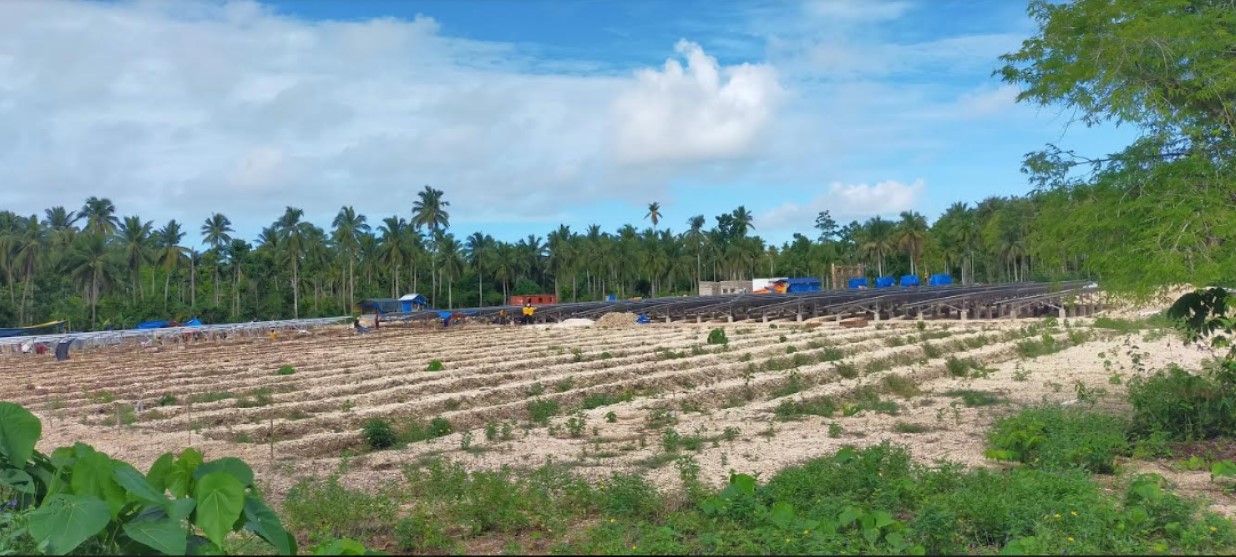
LIVELIHOOD BOOST Poor households in the island province of Tawi-Tawi will get a steady supply of electricty once the solar-hybrid power plant in Sitangkai town is completed. The power project is also expected to boost livelihood programs, like seaweed farming, in the province. —PHOTO COURTESY OF MINDANAO DEVELOPMENT AUTHORITY
DAVAO CITY — The Mindanao Development Authority (MinDA) is banking on two renewable energy projects to help improve access to electricity among the poorest communities in Mindanao still reeling from the impact of the COVID-19 pandemic.
Secretary Emmanuel Piñol, MinDA chair, said the projects included Renewable Energy for Tawi-Tawi Seaweeds (Rets), a hybrid project with solar, photovoltaic, and diesel components to generate about 1.65 megawatts of energy for poor off-grid households in the seaweed-producing communities in the island towns of Sitangkai and Sibutu.
Piñol said the projects would help Mindanao sustain its economic growth stunted by the impact of the pandemic. The MinDA believes that electrification is key to improving the quality of life in Tawi-Tawi, one of the biggest producers of seaweeds but still remained one of the provinces with the least access to stable electricity.
“While our power supply is deemed stable, we inevitably continue to brace for the impact of the COVID-19 pandemic and the threats from various natural disasters,” Piñol said in a statement.
EU funding
Rets, which is under construction, is a 4.2-million-euro (P247.25 million) project funded by the EU’s Access to Sustainable Energy Program (Asep), said Assistant Secretary Romeo Montenegro, the deputy executive director of the MinDA.
The project, a partnership between the MinDA and the United Nations Industrial Development Organization Philippines, will benefit more than 3,000 households while providing the energy needs of seaweed postharvest facilities in the area.
Also involved in the project are Tawi-Tawi Electric Cooperative, the Tawi-Tawi provincial government, Mindanao State University-Tawi-Tawi, Association of Isolated Electric Cooperatives Inc., Island Light and Water Energy Development Corp., and the Bangsamoro Autonomous Region in Muslim Mindanao.
The MinDA is also about to implement another EU-funded project under Asep, Integration of the Productive Uses of Renewable Energy.
The 4.5-million-euro (P264.91 million) project seeks to provide renewable energy solutions to the livelihood of poor communities in 10 areas in Mindanao.
Montenegro said it would come in the form of solar-powered facilities to run coffee dryers, ice-making machines, and even irrigation systems in targeted communities in Picong, Lanao del Sur province; Sitangkai and Sibutu in Tawi-Tawi; the towns of Kalamansig, Lebak, Bagumbayan, and Ninoy Aquino in Sultan Kudarat province; Tulunan and Arakan towns, and Kidapawan City in Cotabato province; and Glan town in Sarangani province.
“[The project] is focused on bringing inclusive and sustainable economic and social developments in Mindanao, particularly to families in marginalized and disadvantaged communities through the use of [renewable energy] solutions for their livelihood activities and household energy needs,” the MinDA said in a statement.
Military help
This developed as some 3,033 households in Barangay Lupa Pula, Mapun town in Tawi-Tawi finally get to enjoy electricity for the first time after military engineers completed a four-year power project on the island.
Lt. Gen. Corleto Vinluan Jr., commander of Western Mindanao Command, said that by end of the second quarter this year, 2,286 more households—or a total of 5,319 households in 26 sitios (subvillages) on the island—would benefit from the P24.2-million electrification project.
“Mapun is a beautiful island, the people deserve the best here,” Vinluan said. “Let us continue to work together for peace and prosperity here in the beautiful island of Mapun.”’
The project, started on March 13, 2017, is set to be finished by the end of the second quarter this year, according to Brig. Gen. Anthony Cacayuran, commander of the 54th Engineering Brigade, whose unit carried out the construction and installation of the project in the area.
“The project is now 95-percent complete,” he said. “Currently we are doing the installation, stringing and tensioning of aluminum conductor steel reinforced wire on 11 steel poles.”